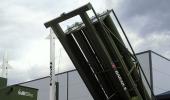 The Hague Code of Conduct against Ballistic Missile Proliferation is a toothless mechanism, but it may well end up serving India’s interests, says Ajay Lele.
The Hague Code of Conduct against Ballistic Missile Proliferation is a toothless mechanism, but it may well end up serving India’s interests, says Ajay Lele.
Just a few days before Prime Minister Narendra Modi kicked off his five-nation visit that includes the United States, India joined The Hague Code of Conduct against Ballistic Missile Proliferation. This code is considered an important global mechanism for containing the spread of ballistic missiles and joining it is considered an attempt to create a favourable atmosphere for India joining the Nuclear Suppliers Group.
Joining the HcoC should not be viewed as a kneejerk reaction. For the last couple of years there were signals that India was in favour of joining this grouping.
Particularly after the Second World War, the global balance of power has revolved around one issue, nuclear supremacy. The major global powers have ensured that the key to supremacy (read nuclear weapons) would be controlled by them. Today, for an energy-starved world, there is a need to make investments in the production of nuclear energy as one of the means to achieve energy security.
Unfortunately, the road towards production of nuclear energy could be diverted to the production of nuclear weapons. There is a possibility that some States could use the nuclear energy route as a facade for weapons, but States like India which already possess nuclear weapons have no need to do so. However, China is exploiting the present situation and opposing India’s entry into the NSG. Naturally, India has to remain proactive, and signing the HCoC is one step in that direction.
This mechanism is a voluntary, legally non-binding multilateral body aimed at preventing the spread of ballistic missiles that can deliver weapons of mass destruction. The HCoC formally came into effect on November 25, 2002, at a conference at The Hague (the Netherlands). This code expects the subscribing States to furnish annual declarations on missile policy and the pre-launch notifications (PLNs) of missile test launches. However, if the signatory State decides not to divulge this information, the governing body cannot take any action because the code is voluntary and legally non-binding! In short, it is a toothless mechanism.
The HCoC is a classic case of how arms control and disarmament diplomacy are played out globally. Ideally, the abolition of nuclear weapons across the world should happen but in reality, it is the most unlikely event. Under such circumstances, efforts are made to ensure that at least their further spread is restricted.
There is an inherent hollowness in the claim that India joining HCoC would further strengthen the global non-proliferation regimes. But, such claims are required to be made to keep the so-called flame of arms control and disarmament burning.
Since ballistic missiles are considered one of the most suited platforms for nuclear weapons delivery, there have been a few attempts to control these technologies. The Missile Technology Control Regime is one such. It came into being in 1987, partly in response to the increasing proliferation of WMDs. This regime rests on adherence to common export policy guidelines (the MTCR guidelines) and all decisions are made by consensus. It is expected that States party to this regime would establish national export licensing measures on technologies associated with missile developments.
The MTCR in particular attempts to control rockets and unmanned aerial vehicles capable of delivering a payload of at least 500 kg beyond a range of at least 300 km. The overall approach of the MTCR regime is to develop a second line of defence with regard to nuclear proliferation. However, there are very few takers for MTCR, it has 34 members in all, most of them States without any missile capability! Probably, the failure of MTCR could be the reason for the development of HCoC, which is a much diluted version of MTCR.
Today, the HCoC has more than 135 members. But the number actually means nothing because the States with ballistic missile capability, like China, Pakistan, Israel and Iran, are not its members. It is a welcome change that India is not associating its joining any international group with the actions by Pakistan and China. India already has a very successful treaty with Pakistan on ballistic missiles where both the States inform each other in advance about their proposed missile tests.
India could have joined the HCoC much earlier too. The code is actually a mechanism that aims to work on the ‘lowest common denominator’ principle. What India could do now as a memberState is to push for adding cruise missiles along with ballistic missiles to the code.
As of now India joining the HcoC is more about a “feel good factor” from the point view of the NSG and other such regimes.
Dr Ajey Lele is a research fellow at the Institute for Defence Studies and Analysis, New Delhi.










